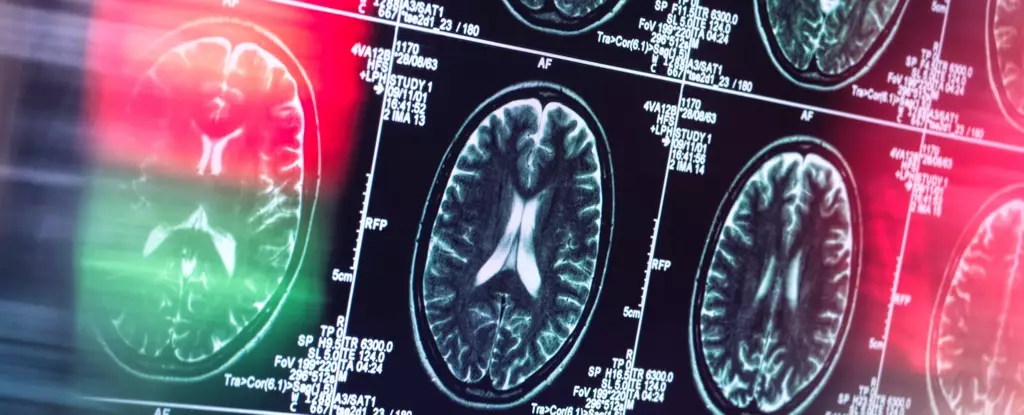Alzheimer’s disease presents an escalating global crisis as it afflicts over 50 million individuals worldwide, with a new case diagnosed every three seconds. The complexities underlying this neurodegenerative condition extend far beyond mere memory loss; they encompass a cascade of cognitive disabilities that devastate the lives of individuals and their families. Acknowledging this reality, researchers and healthcare providers have strived to uncover effective treatments that halt or reverse the disease’s progression. However, recent years have cast shadows on conventional approaches, leading to a much-needed re-evaluation of long-standing theories and strategies in Alzheimer’s research.
Research into Alzheimer’s has seen its share of controversies. For instance, a pivotal 2006 study published in the esteemed journal Nature identified beta-amyloid protein as a central culprit in Alzheimer’s pathology, only to later face allegations of data fabrication. Adding to the complexity of this discourse was the FDA’s approval of aducanumab in June 2021, a drug targeting beta-amyloid, despite concerns about incomplete and contradictory evidence supporting its efficacy. This divergence of opinion among professionals highlights a key dilemma: how can researchers navigate the murky waters of Alzheimer’s when established paths may be lined with inaccuracies or misconceptions?
The disagreements garner significant attention as millions of patients and families wait for solutions. With a relentless focus on beta-amyloid without tangible outcomes so far, the scientific community finds itself in a theoretical quagmire. The prevalent approach, oriented towards reducing amyloid accumulation, risks overshadowing other potentially valuable avenues of investigation. It raises questions regarding whether a paradigm shift is necessary to uncover a more holistic understanding of Alzheimer’s disease.
With this pressing need for innovation, scientists are exploring alternative frameworks. One perspective emerging from the Krembil Brain Institute, in Toronto, suggests that Alzheimer’s may not primarily stem from the brain itself, but rather from dysfunction in the brain’s immune system. Researchers propose viewing beta-amyloid not as a villain, but as a component integral to the brain’s immune response—a naturally occurring substance misinterpreted as harmful when its protective mechanisms go astray.
The idea is that beta-amyloid rallies to assist in healing after brain injuries or infections but misidentifies healthy brain cells as threats due to similarities with bacteria. This misidentification can lead to a chronic autoimmune response, contributing to the progression of Alzheimer’s. By reframing Alzheimer’s in this light, we can begin to analyze its causative factors more critically, focusing on how autoimmune processes might intersect with neurodegeneration.
In addition to the immune dysfunction theory, researchers are investigating multiple other hypotheses that encompass the genetic, environmental, and metabolic complexities linked to Alzheimer’s. For instance, mitochondrial health is receiving attention due to its essential role in energy production for brain cells; impairment in these cellular powerhouses could undermine cognitive functions. Infection theories, which link oral bacteria to neurological decline, as well as dysregulation of metal ions—such as zinc, copper, and iron—are also under serious examination.
These varied theories indicate a rich tapestry of potential insights, each offering unique angles to approach the disease. They underscore the necessity of a multi-faceted exploration rather than a singular focus on beta-amyloid. Importantly, the emergence of new theories fosters hope that varied treatment strategies may arise, providing a more extensive arsenal against Alzheimer’s.
Alzheimer’s is not just a medical issue but a public health crisis demanding immediate attention. The socioeconomic implications are substantial, challenging healthcare systems already under strain. With family members often becoming caregivers, emotional and financial burdens compound the difficulties faced by those living with the disease. Therefore, understanding its underlying causes and developing diverse treatment modalities must be prioritized to alleviate some of the stress on families and healthcare providers.
As researchers and clinicians redefine their approaches, fostering a spirit of collaboration across different disciplines could further catalyze breakthroughs. Shared insights, diverse perspectives, and complementary methodologies may unveil a more comprehensive picture of Alzheimer’s disease.
As the search for effective treatments continues, the scientific community must embrace new paradigms that look beyond established dogmas. By recognizing Alzheimer’s not just as a disease of the brain, but also as an intricate interplay of immune, metabolic, and infectious processes, researchers have the potential to unlock vital understandings and pave the way for innovative therapies. Addressing this global challenge with an open mind and collaborative spirit could eventually lead to success in combating Alzheimer’s disease.

